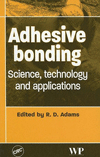Question: How should we prepare our surfaces for adhesive bonding?
Answer: This is a very broad topic for this column. Adhesive bonding requires several choices to be made, such as type of adhesive, additives like adhesion promoters and surface preparation. A lot depends on what materials you are trying to bond—metals, plastics or composites.
Specific treatments are suitable for different materials, but one common factor if you want to maximize adhesive strength is surface cleanliness—the removal of contaminants such as machining oils, mold release agents, etc. For example, the traditional method for most metal surfaces was vapor degreasing using chlorinated solvents. However, this method is rarely practiced these days due to health and safety reasons. Most people use safer solvents or aqueous surfactant solutions. In the testing of adhesives, we often use the following sequence:
1. Grit blast the surfaces
2. Immerse in a solvent like d-limonene to remove oily contaminants
3. Use an alcohol wash to remove traces of the d-limonene and to promote fast drying
To get absolute maximum bond strength on metals like aluminum, special acid etching procedures are often recommended; these were developed by the aerospace industry. For plastics, solvent wiping or immersion is a preferred method. More elaborate methods involve plasma treatment, particularly for non-polar plastics like polyolefins such as polyethylene or polypropylene. Although these methods are purported to produce a more polar surface through oxidation reactions, their effect on surface cleanliness is definitely a key factor in their efficacy.
Any views or opinions expressed in this column are those of the author and do not represent those of ASI, its staff, Editorial Advisory Board or BNP Media.









